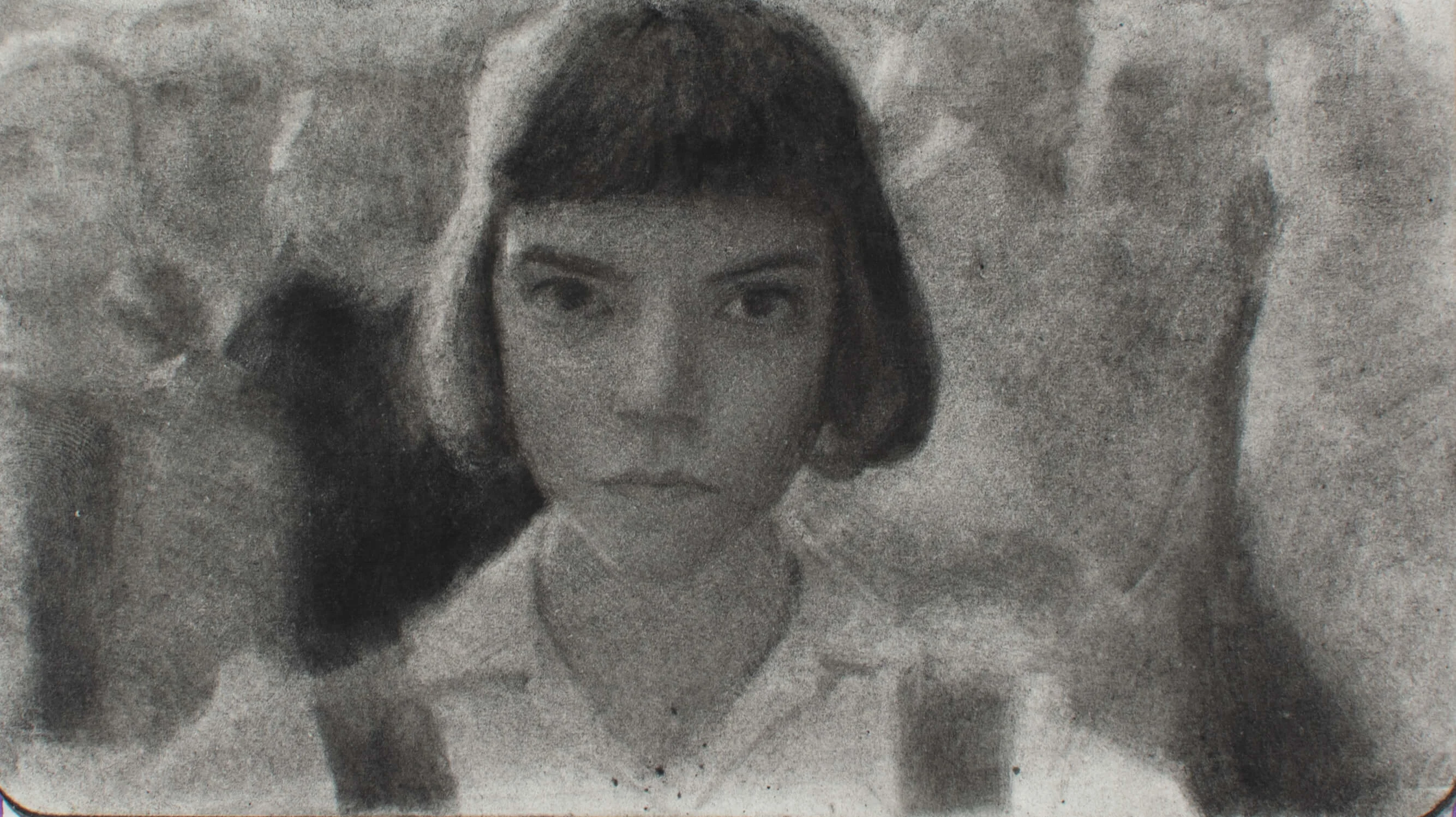
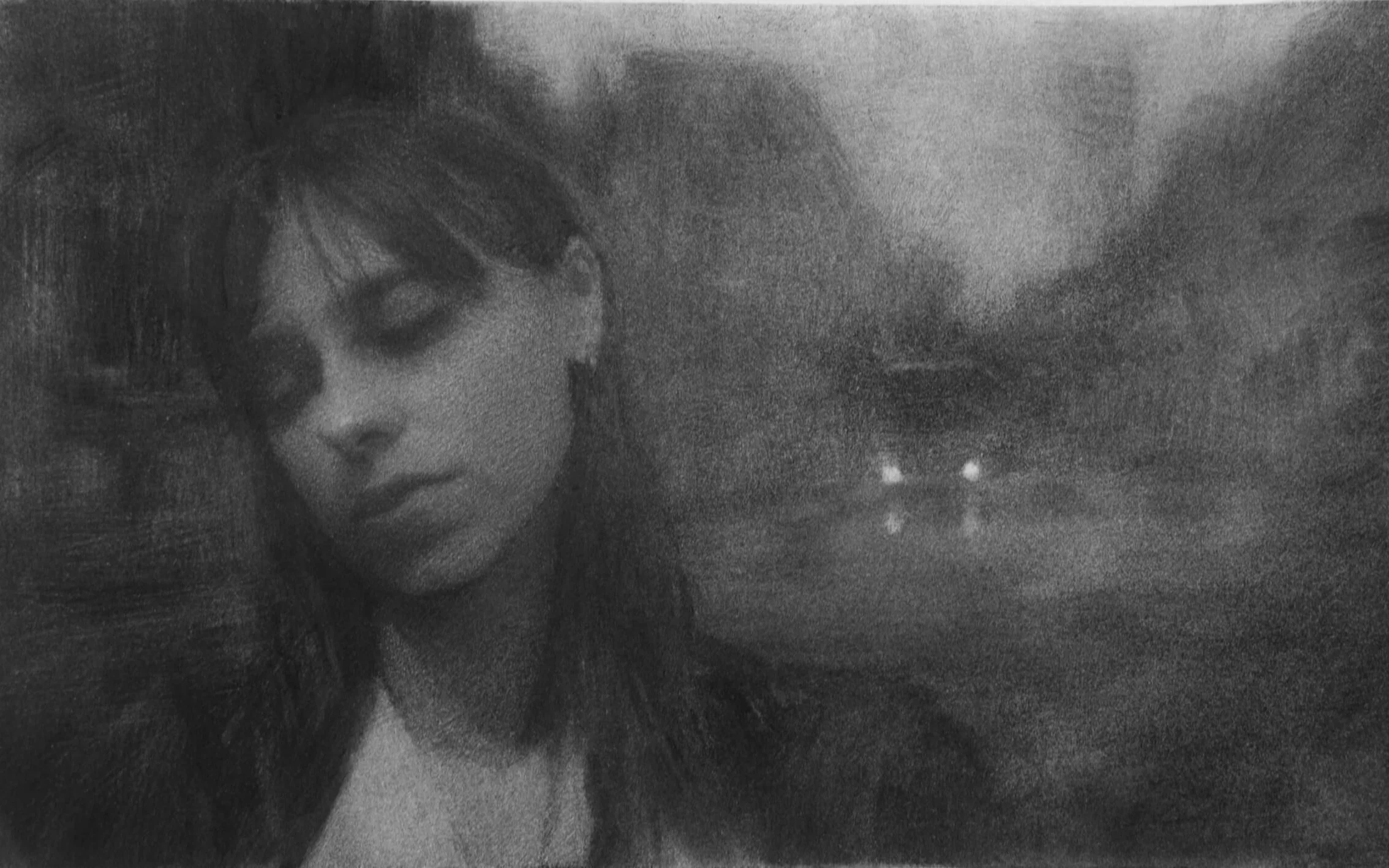
Born in France to Vietnamese parents, artist Sim Sim keeps his identity to himself online. His charcoal drawings, though, are no such secret, with tens of thousands of people waiting for every new one to appear on his Instagram. He fills his many notebooks with stirring sketches of film scenes and sights he sees and, most often, those close to him. He explains to writer Alix-Rose Cowie how he sees drawing his loved ones as his love language, and as the only way to show that he truly sees them.
Sim Sim is a mysterious artist, happy to share his intimate charcoal drawings online but never his face, or his full name. His tens of thousands of followers probably don’t know that he was born in France to Vietnamese parents, or that he studied psychology and 3D animation. “I want people to first focus on the art itself and not the person. Also, I think I'm camera-shy,” he laughs.
Seven or eight years ago, Sim Sim came across an artist on YouTube making time lapse videos of charcoal drawings. He was amazed by the range of values; how dark the charcoal could be, but also how soft. He liked that it was matte and didn’t have the inevitable sheen of graphite, which he found annoying. He’d always drawn as a hobby but discovering this medium became a turning point. Now, when he posts his work, the comment section is filled with enthusiasts asking how it’s done, and he doesn’t mind all the questions as he started in the same way. “Looking at bigger Instagram accounts, I was always asking “What did you use? What paper did you use?”.
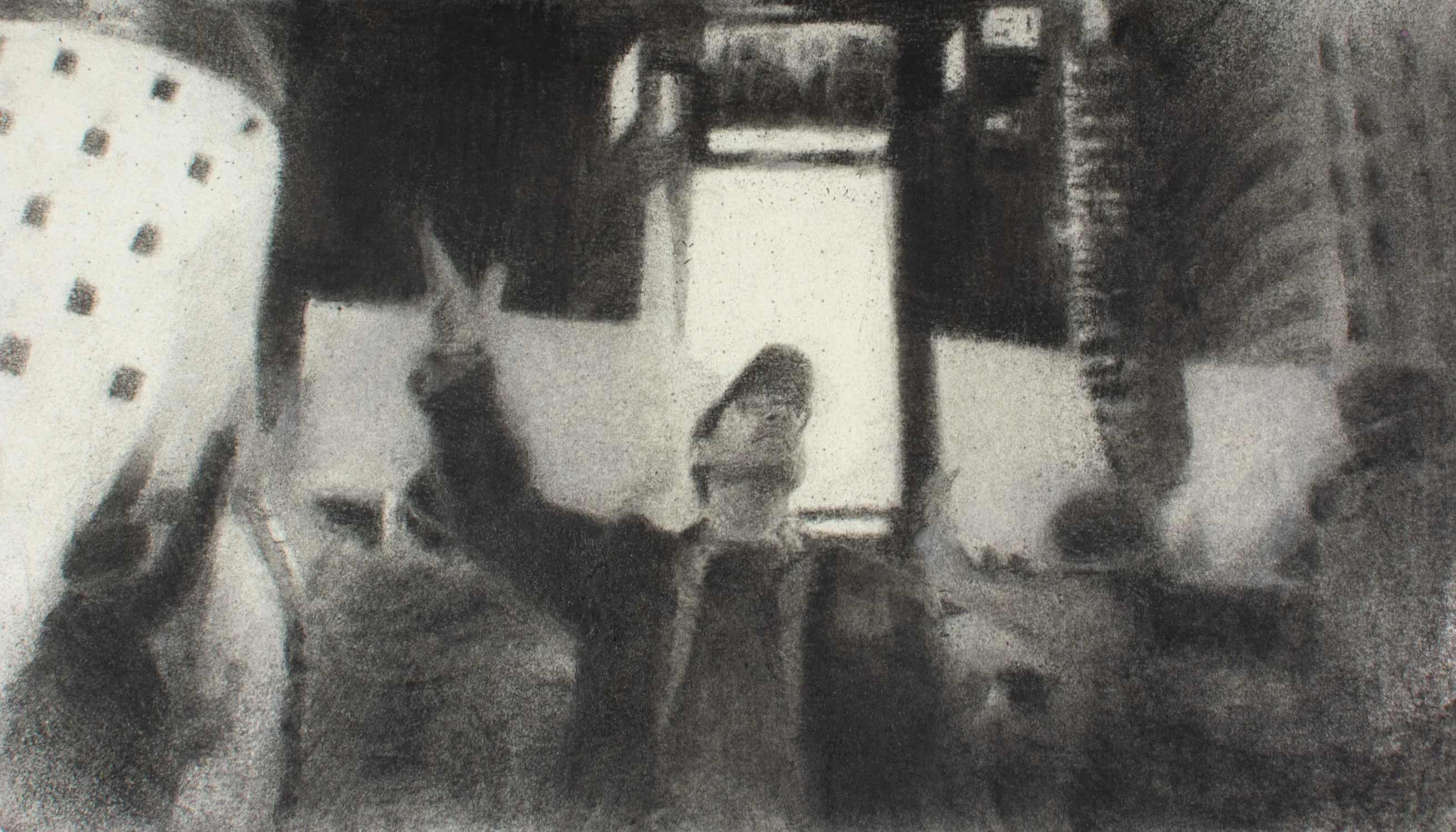
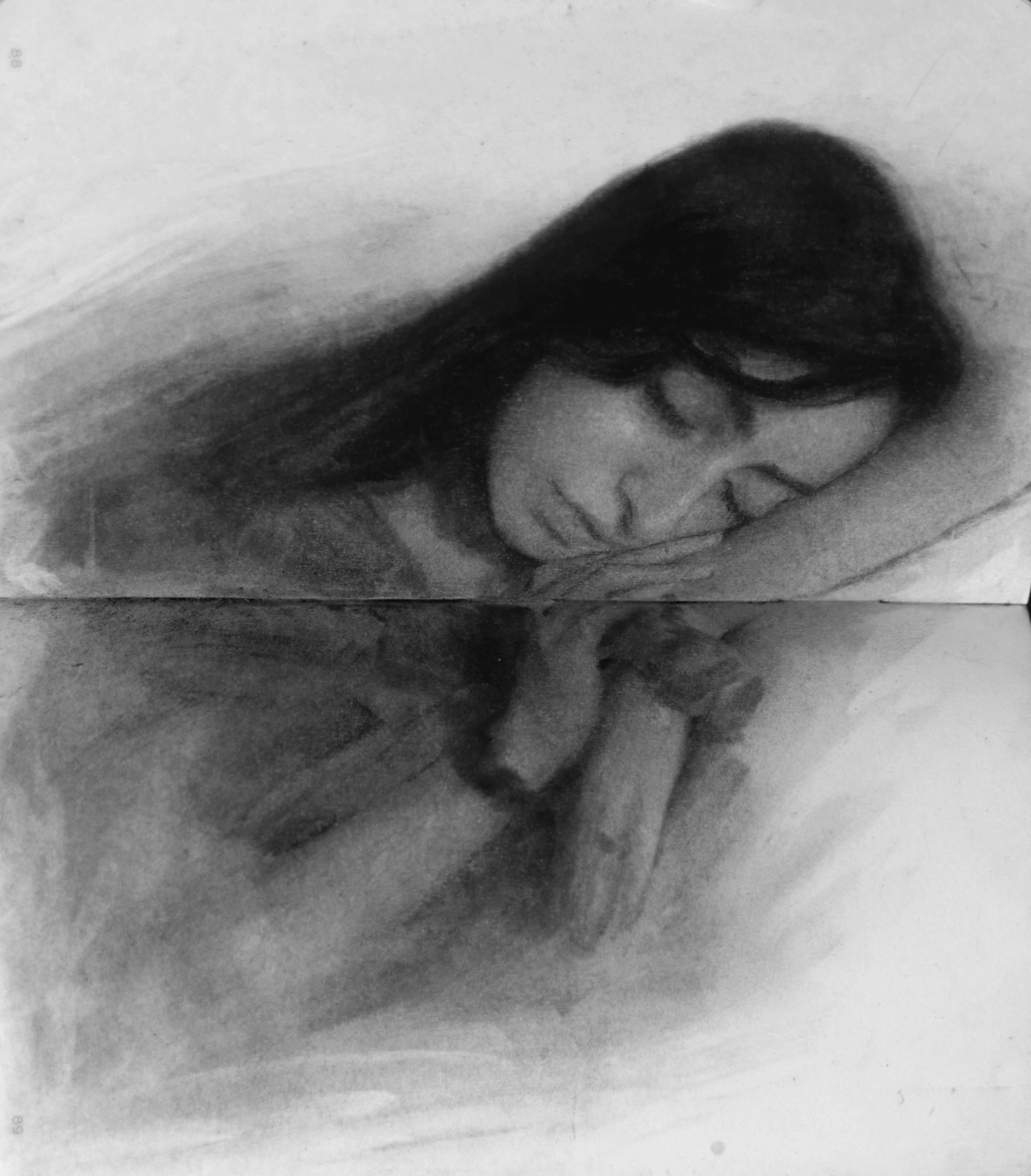

I’ve always liked the idea of capturing snapshot moments. It feels so dreamy and nostalgic.
In one of Sim Sim’s TikTok videos he snaps a stick of charcoal into pieces which he grinds into a fine powder using an old pepper grinder. He then brushes this dust onto the page to create a hazy atmospheric backdrop for one of his drawings. Other times he’ll mix this powder with water to create a smoky wash, similar to watercolors. To create white highlights he uses a rubber bulb syringe which disperses the charcoal with short, sharp puffs, and he fixes his drawings with hairspray. Being self taught, he’s developed his own tricks over time, hacking the medium to find new techniques.
Notebooks are Sim Sim’s preferred canvas; they’re small and light enough to carry around so that he can draw anywhere. He spends a lot of time studying the greats in museums, sketching strangers on the metro or drawing his friends across cafe tables. He chooses notebooks in plain colors with blank, off-white pages, sometimes getting his name embossed on the leather cover in the stationery shop. As with a diary, he fills his notebooks and they become personal albums of what he was doing and who he was with. “I’ve always liked the idea of capturing snapshot moments,” he says. “It feels so dreamy and nostalgic.” The pocket-size pages make the drawings inside seem like private keepsakes or memories.

Sim Sim’s notebooks are filled with portraits, his main preoccupation. He borrows recognizable subjects, like Anya Taylor-Joy in “The Queen’s Gambit” or Zendaya in “Malcolm & Marie,” from his favorite scenes on screen. “A movie is a cool thing to study, but it's not very personal because I didn't shoot it,” he says. “When I work on a piece of art from the beginning – from the models to the photography to the background – it's in my control, so it's my story.”
His favorite subjects are his close friends; Jeanne standing on an escalator, or a candid shot of Zoe in a hoodie on the couch texting on her phone. Drawing his Asian friends is particularly meaningful to Sim Sim. “I like to empower this culture by drawing people who look like me, who share some culture with me.”
When you draw someone, you pay attention. It's like a puzzle; you have many shapes that you put together, and in the end it makes a person.
Taking Polaroids gives Sim Sim the same nostalgic feeling as drawing in notebooks, and experimenting with film photography has been a way to improve his drawing. “Every aspect of photography teaches you how to make a better image,” he says. It taught him how to frame, to work with people, to use background details to add to the story, and to use light to create a mood.
The light he most enjoys capturing in charcoal is artificial light; the headlamps of a bus on a rainy day, the glow of a billboard at night, the fluorescent lights of the subway underground. He enjoys that this places his work in contemporary times, distanced from the old masters in the museum artworks he sketches for practice. “Now we live in a more digital world, a more electronic world with so much artificial light. It's part of our life. I think it creates so many interesting effects.”
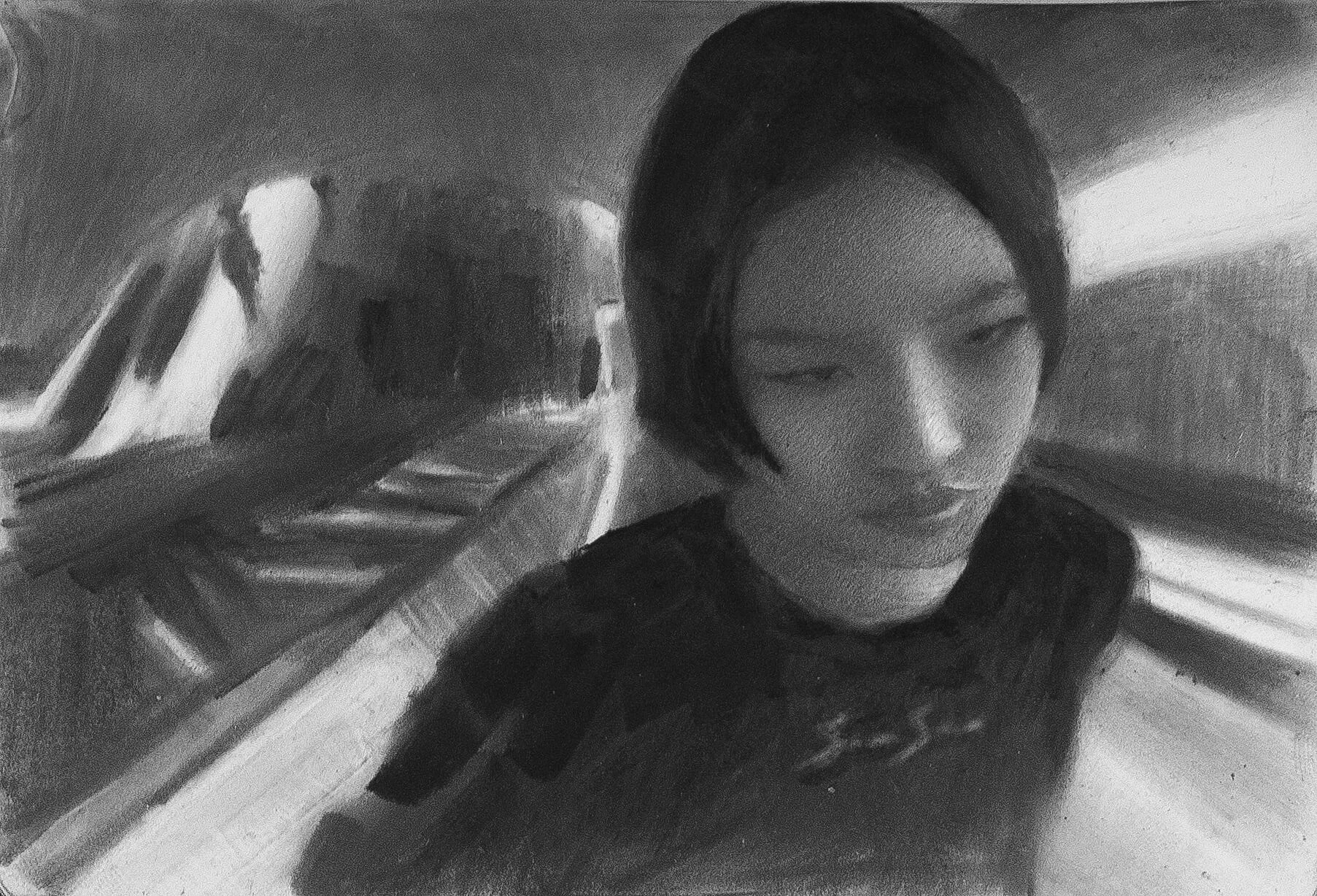

While Sim Sim enjoys aspects of photography in his work – the grainy texture of analog film, the blurred details of Polaroids – he doesn’t want his drawings to look like photographs. “You have to be able to tell it's a drawing,” he says. For him, drawing people is committing to seeing them. “Representing people you love like this is different to capturing them with a camera,” he explains. “When you draw them, you pay attention, and you're like, ‘Wow. This nose bridge and this little bump, it makes her.’ It's like a puzzle; you have all these shapes that you put together, and boom, it makes a person.”
While most of his drawings are tucked away safely in his many notebooks, he also loves being able to give his friends their portraits. He considers drawing them to be his love language. “I'm not a chatty person. I don't text a lot. I don't talk a lot. I don't share my news. It's my way to say I love them, and that I’m not forgetting them. It's like saying, ‘Hey, don’t worry, I'm still there and I still love you’.”




